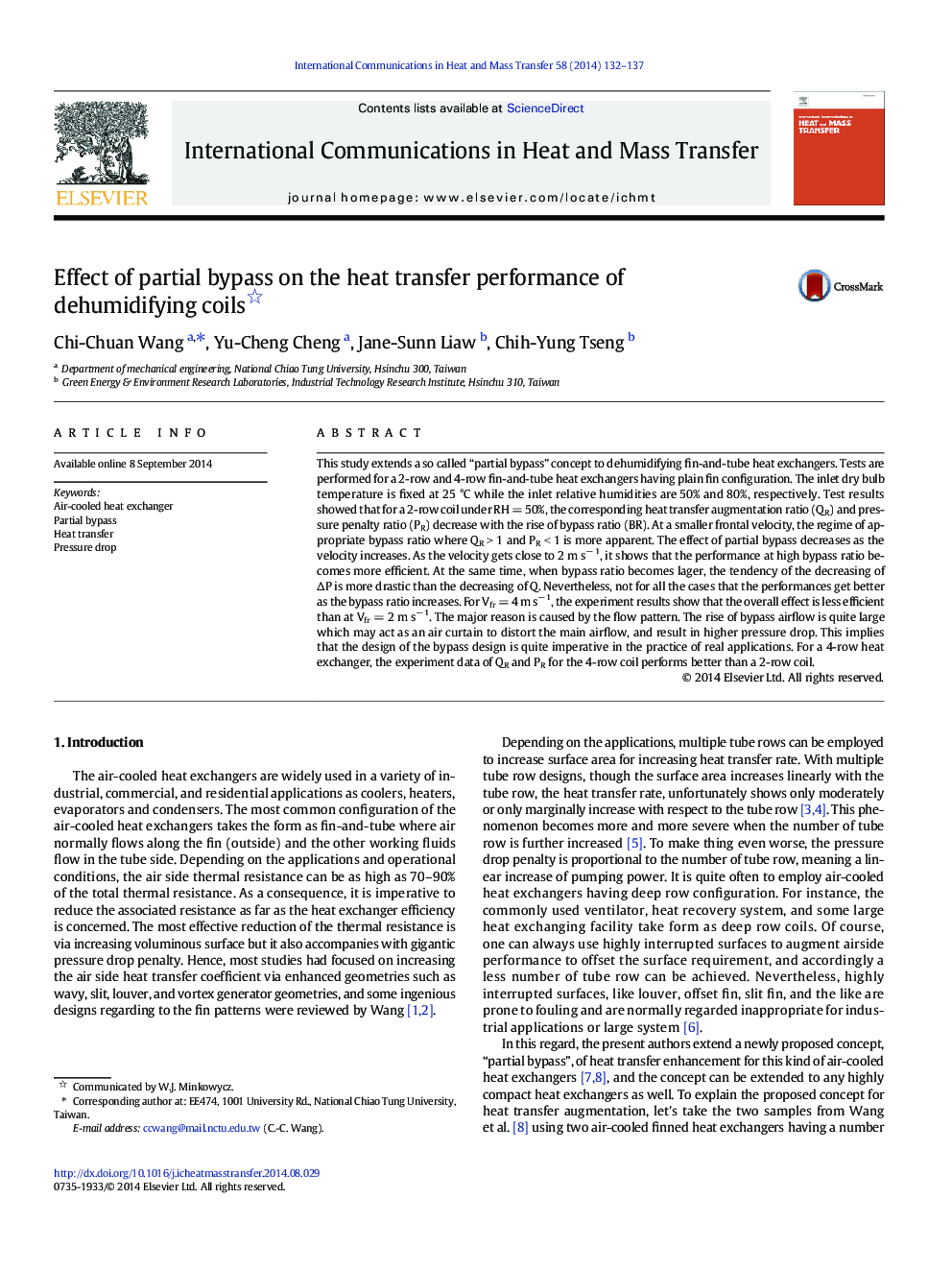| Article ID | Journal | Published Year | Pages | File Type |
|---|---|---|---|---|
| 653289 | International Communications in Heat and Mass Transfer | 2014 | 6 Pages |
This study extends a so called “partial bypass” concept to dehumidifying fin-and-tube heat exchangers. Tests are performed for a 2-row and 4-row fin-and-tube heat exchangers having plain fin configuration. The inlet dry bulb temperature is fixed at 25 °C while the inlet relative humidities are 50% and 80%, respectively. Test results showed that for a 2-row coil under RH = 50%, the corresponding heat transfer augmentation ratio (QR) and pressure penalty ratio (PR) decrease with the rise of bypass ratio (BR). At a smaller frontal velocity, the regime of appropriate bypass ratio where QR > 1 and PR < 1 is more apparent. The effect of partial bypass decreases as the velocity increases. As the velocity gets close to 2 m s− 1, it shows that the performance at high bypass ratio becomes more efficient. At the same time, when bypass ratio becomes lager, the tendency of the decreasing of ΔP is more drastic than the decreasing of Q. Nevertheless, not for all the cases that the performances get better as the bypass ratio increases. For Vfr = 4 m s− 1, the experiment results show that the overall effect is less efficient than at Vfr = 2 m s− 1. The major reason is caused by the flow pattern. The rise of bypass airflow is quite large which may act as an air curtain to distort the main airflow, and result in higher pressure drop. This implies that the design of the bypass design is quite imperative in the practice of real applications. For a 4-row heat exchanger, the experiment data of QR and PR for the 4-row coil performs better than a 2-row coil.
